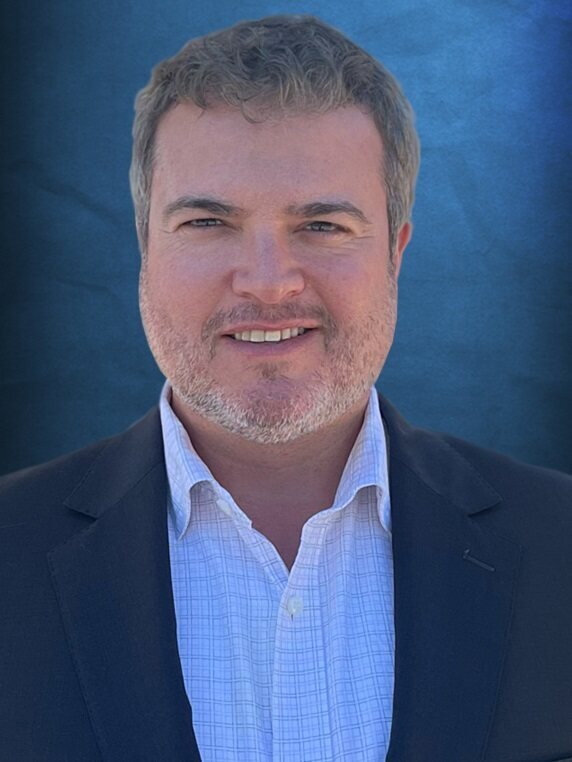As you know, entering a career in medicine is a major investment. The financial and personal cost is substantial with years of education and long hours of residency. After so much sacrifice, what could force clinicians to walk away from the profession they devoted their lives to?
A research report recently published by KLAS confirms that – unfortunately – burnout is on the rise. In recent years, only 24% of providers reported no burnout, meaning that the lion’s share of the clinician community currently experiences some level fatigue. Of course, this adversely impacts healthcare as it is one of the major causes of staffing shortages. But how does clinician burnout come about? What has been done to combat clinician burnout? What more can be done to alleviate clinician burnout? In this article, each of these questions will be addressed.
Clinician Burnout Defined
The National Academy of Medicine defines clinician burnout as, “a syndrome characterized by a high degree of emotional exhaustion and depersonalization (i.e., cynicism), and a low sense of personal accomplishment at work.”
Signs of burnout are clinicians who are noticeably in low spirits and increasingly withdrawn. Burnout is the phenomenon that leads to turnover, early retirement, disengagement, reduced productivity, and ultimately undermines care quality. Clinician engagement – the antithesis of clinician burnout – is critical to the performance of any healthcare organization and is sustained with sufficient support for providers.
Root Causes of Clinician Burnout
Burnout boils down to how clinicians perceive an inability to provide patient care. For example, a clinician finally has a patient base to shepherd, only to encounter obstacles between themselves and patients.
Clinicians just want to provide the best care for patients and focus on delivering attentive care. Anything that puts more work on clinicians’ shoulders and makes it difficult to effectively provide care, such as intrusive daily technology quirks, will contribute to burnout for clinicians.
To further compound the issue, much-needed time to rest is stolen from them as they must remain after hours, catching up on mandatory administrative tasks such as:
- Care quality documentation
- Completing forms
- Resolving prior authorizations
- Minding network restrictions
A portion of this extra work is generated by the financial interests of insurance companies, or high quality measure tracking. Clinicians also are left wondering how these tasks ended up in their lap when such responsibilities used to be delegated elsewhere. More physician burnout factors are listed by the KLAS report, along with corresponding survey results:
- Excessive time spent on bureaucratic tasks – 42%
- After-hours workload – 38%
- Reduced work efficiency due to EHRs or IT tools – 33%
- Not having the control to reduce their work hours – 33%
- Chaotic working environment – 28%
- Lack of effective teamwork – 22%
- EHR or other technology tools interfering with care quality delivery – 20%
- Differing values from the organization – 18%
- Lack of professional autonomy – 17%
- Training gaps with EHR or other technology tools – 14%
Noticeably absent are any factors concerning the patients. It is not the work of care delivery itself that induces churn, but all the demands outside of caring for patients.
More About EHR as a Burnout Contributor
You will notice that electronic health records (EHR) are mentioned several times in the previous list from KLAS. Many practices find that their EHRs and other technology tools do not work as expected, and do not work well with each other either. Clinicians often find that even when they move to a different EHR, the same problems emerge. As EHRs have become standard in practices, clinicians find themselves without a way around the strains imposed by EHRs that never seem to work well.
EHRs also tend to impede the ability to comply with regulations regarding interoperability and information blocking. This becomes untenable when EHR vendors are resistant to change their systems in such a way that would make patient data accessible according to governmental standards.
Indeed, EHR vendors have been slow to venture through the interoperability roadmap. Thus, there are many benefits of interoperability that many providers cannot currently benefit from. Not only does this interfere with compliance, but it also makes the clinician’s job more difficult when they don’t have the data they need in front of them when seeing a patient.
What Can Be Done to Reduce Clinician Burnout?
Yoga and retreats were, at one time, introduced as solutions to address symptoms of burnout. While self-care is essential to the well-being of any human being, offering stress reduction opportunities only addresses a single symptom, but not the root causes of burnout. Suppose a clinician does spend a few days at the spa, but upon returning to work, the same pattern repeats – feelings of dread resume making them, again, question why they stay in practice.
Another reason offering retreats is impractical is that there is just not enough time to leave their post, let alone escape every time their burnout symptoms become severe. Cost is also to be considered for such wellness getaways, and since it will not resolve the problem long-term, such an investment is questionable. So, when compensatory stress reduction isn’t the answer, what can be done to remediate the root causes of clinician burnout?
How Can Technology Help?
One way to address technology as a culprit for clinician burnout is to confront EHR problems. “Out of the box” base model EHRs are generally not equipped for sufficient compatibility with either your workflows or your other software tools. EHR optimization combined with effective training can greatly reduce ongoing struggles between the EHR and the clinician.
Including clinicians in technology decisions also goes a long way toward countering friction. By gathering feedback, you can begin to explore solutions that retrofit the EHR system. The aforementioned KLAS report contains two case studies where EHR improvements made a notable difference regarding occurrences of burnout. In one such case – as a group – providers were given the opportunity to choose the new EHR.
After a while, many clinicians begin to view technology as what stands between them and their patients, and unless something changes, this block remains immobile. EHR consultants can open new pathways by optimizing your EHR to support your workflow needs and providing training that will walk clinicians through the updates, best practices, and other tips that make work easier.
How Can People Help?
Technology produces tools, but people affect meaningful change. The truth is that team effort is integral to uprooting causes of clinician burnout. The main issue is that clinicians have too much work, but no practical ways to reduce it or complete it faster. Practice redesign that offloads burden from clinicians and redistributes the workload is the most promising solution. The following sections explain how certain members in the practice ecosystem can help mitigate clinician burnout.
Practice Management
Just as they would assess an EHR, it is important to assess the practice as a whole. This includes evaluating workflows, processes, and technology. An outsider’s perspective – via a healthcare consultant – can provide a more comprehensive evaluation of the practice and uncover areas of improvement. Working with consultants also allows practice leadership to be introduced to solutions that have worked for other organizations like theirs.
Other ways practice management and leadership can address clinician burnout include:
- Build trust and rapport with clinicians
- Provide opportunities for clinicians to have a voice in practice decision-making
- Be prompt in responding to clinician complaints and requests for enhancements
- Continuously look to improve the efficiency of the EHR
- Provide “sprint” events of intensive training where providers can build upon skills or learn ways to reduce after-hours charting
- Procure revenue (such as quality program bonuses) that will cover additional staffing costs Resolve reimbursement issues and mitigate payer denials
- Make compliance easier
Additional Staff
In most situations, rebalancing the workload means adding staff – unless you already have staff with the capacity to take on more work. Below are six specific roles that can help rebalance the workload burden upon clinicians.
Patients
There are many things a patient can do for themselves that they previously depended on staff to do. Digital front door – or more specifically, the patient portal – offers many self-service features. With the help of the patient portal interface, patients can schedule appointments, cancel appointments, retrieve reports such as lab results, pay a bill, or leave a message for their provider.
Increasing patient portal utilization through expanded features and a satisfactory user experience means your staff spends less time on the phone. This frees up time for staff to help with other tasks that help balance out the workload.
Medical Assistants
Medical assistants can help with charting and other clinic tasks that the clinician finds they do not have time for.
Scribes
Scribes are medical professionals who are responsible for note-taking that must be entered into the patient record. With the help of a scribe, the clinician spends less time stopping to make entries and notes and spends more time directly engaging with patients. Work finished by the scribe is work that will not be waiting for the clinician at the end of the workday.
Nurse Practitioners
Nurse practitioners can shoulder some of the burden by seeing patients for many routine visits. As states begin to grant NPs more autonomy, we hope to see a substantial increase in their capacity to help with demand.
Care Managers
Care managers serve a unique purpose within an organization. They oversee the care journey for patients and assist by caring for special case patients so clinicians can turn their focus to the patient at hand.
Social Workers
Patients look to clinicians to solve their health issues, but sometimes matters of health and wellbeing fall outside the scope of medicine. When a patient’s quality of life prohibits them from positive outcomes or reaching their health goals, this is where a social worker can step in and provide resources.
Medical Advantage consultants have seen firsthand how adding care managers and social workers truly makes a difference. For a client, said positions were added to the staff of a physician group. This augmentation of the care team resulted in notable reductions in clinician burnout.
A practice redesign that increases team effort significantly alleviates the isolation clinicians often experience, especially those who shoulder more responsibility than ever before.
Summary of Clinician Burnout Causes and Solutions
Clinician burnout not only extinguishes a bright career, but it also negatively impacts healthcare with turnover, early retirement, disengagement, reduced productivity, and deterioration of care quality. While there are many causes of burnout that vary in impact, the primary causes of burnout are administrative burden, hours added to the workday, and technology that makes the work more tedious.
Providing relaxing respites for clinicians such as massages, yoga, and retreats only addresses one of the symptoms, and offers no long-term solutions. Once the clinician returns to the office, the burnout condition is sure to return.
What can be done in the here and now? First and foremost, management should focus on redesigning the practice for a distribution of workload that alleviates the burden on clinicians. This initiative is made successful through total buy-in within the organization to support and successfully implement redesign initiatives. This includes measures that reduce burnout, optimize workflows, improve processes, and tempers technology.
Discover Clinician Burnout Solutions with Experienced Healthcare Consultants
Practices everywhere feel the impact of clinician burnout. Losing valued clinicians, increased workload on the clinicians who remain, and decline in care quality are just a few of the many ways practices will take a hit from burnout. Although clinician burnout is such a complex challenge, there are key changes that can be made to reverse some of its effects.
With a full practice assessment from seasoned medical practice consultants at Medical Advantage, you can begin to counter issues causing the fatigue that many clinicians experience. Our consultants have optimized hundreds of practices and can share the knowledge of what solutions effectively reduce the inefficiencies that contribute to clinician burnout.
Ready to walk away from the status quo where clinician burnout thrives? Reach out to us today.





